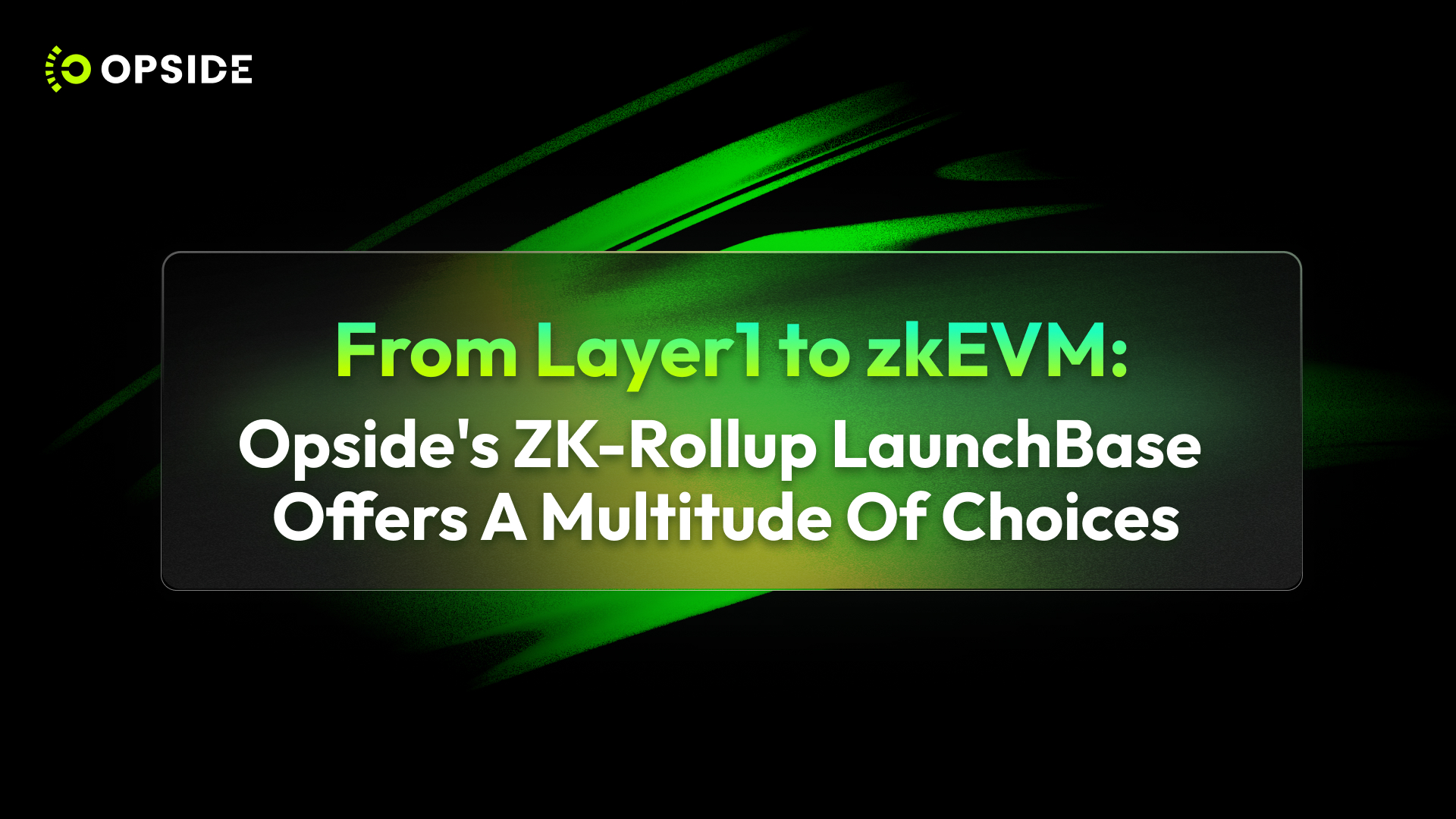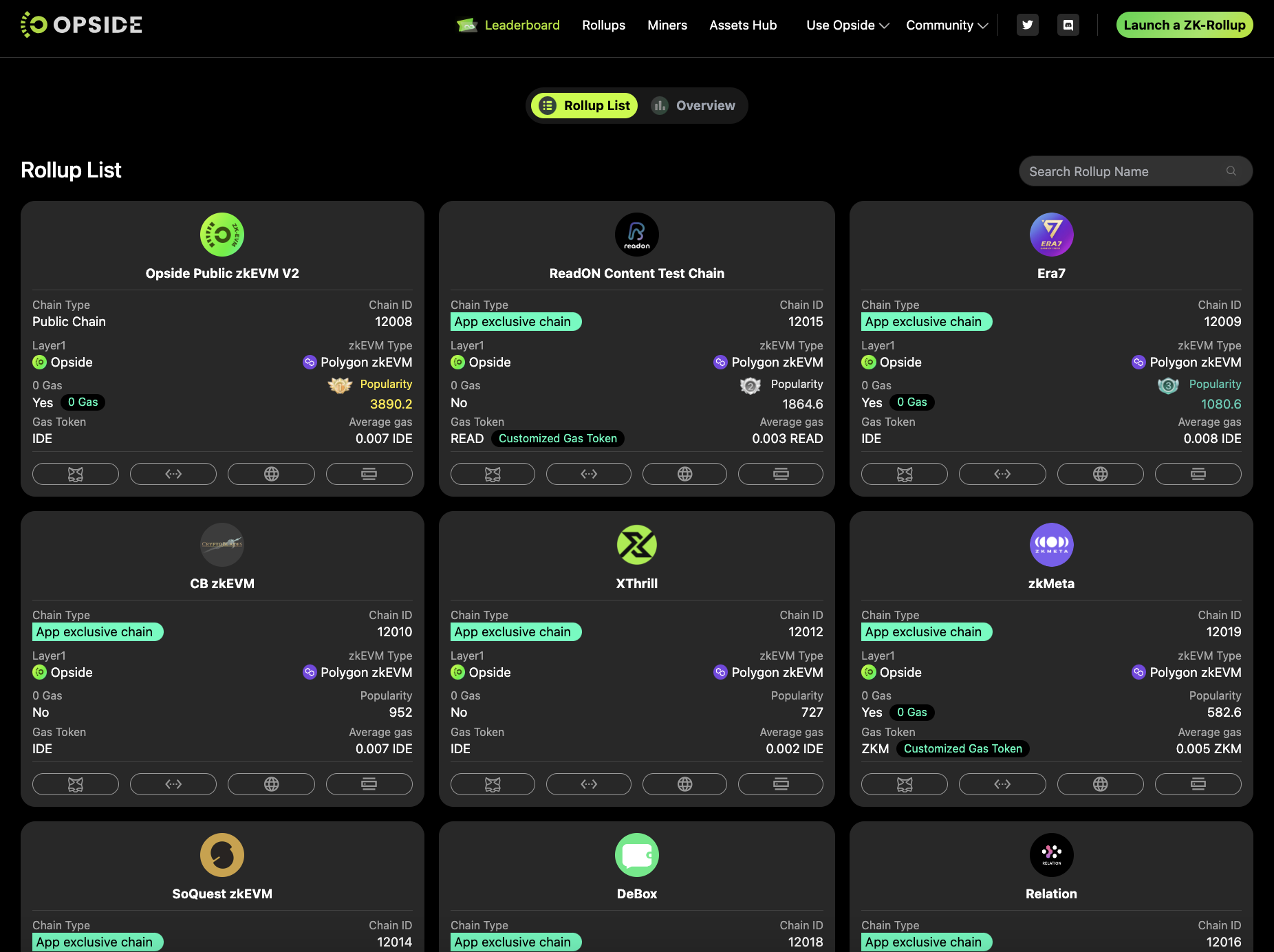
Hong Kong, 16th August 2023, ZEX PR WIRE, RaaS (Rollup as a Service) has been hailed as one of the most promising tracks within the Rollup ecosystem. However, the market’s preference between an early and evolving OP Stack or the rapidly advancing ZK Stack, which holds great potential, remains to be seen.
As one of the contributors to the ZK ecosystem, Opside has recently shared some exciting news. On August 14th, the decentralized ZK-RaaS platform, Opside, announced a major update to its ZK-Rollup LaunchBase. This update supports developers in building custom zkEVM application chains. Core ZK-Rollup components, including Layer1, zkEVM, Gas, DA (Data Availability), and Sequencer, are now open for customization. Moreover, this version of ZK-Rollup LaunchBase also offers various IaaS(Infra as a Service) for initial project selections.
This marks a significant achievement for Opside in terms of modular and customizable Rollup development. It empowers developers and projects to construct customized zkEVM application chains flexibly, fostering expansion and empowerment within the entire ZK ecosystem.
Highlight 1: Support for More L1 Options such as ETH/BSC/Polygon
The choice of Layer1, the foundation for Layer2 network building, is crucial since all user transactions eventually return to Layer1. In the early design stages of Opside, catering to developers’ needs for different EVM-compatible base networks was a priority. The latest LaunchBase by Opside now supports additional testing options like ETH/BSC/Polygon.
Developers can choose ETH Goerli, Polygon Mumbai, BNB Testnet Opside, or Opside as the base network when creating an L2. After a series of stress tests on the testnet, the support for ETH/BNB Chain/Polygon mainnets is expected to be available in early September.
https://opside.network/rollup/create
Clearly, modularity not only enables developers to choose different Layer1 options but also provides diversity and flexibility for other components like zkEVM and Gas Fee Token choices. Opside now fully supports Polygon zkEVM and is actively expanding support for zkSync, Scroll, StartNet, and other zkEVM types such as Linea and Takiko. Additionally, the Gas Fee Token selection is more diverse, allowing project teams or developers to customize tokens for ZK-Rollup’s Gas Fee Token.
Prior to this, over 12 prominent projects in various industries have generated customized zkEVM application chains through Opside LaunchBase. These projects span Defi, Socialfi, and Gamefi applications.
For example, ReadOn, a renowned content distribution platform, generated its own ZK-Rollup, bridge, and browser within 10 minutes using Opside Rollup Launchbase. They also employed their Native Token as ZK-Rollup’s Gas Fee Token.

https://opside.network/rollup/overview
Similarly, Era7, once among the top three gaming projects on the BNB Chain, created a dedicated zkEVM application chain using Opside Rollup Launchbase. Notably, they used Opside’s 0 gas fee feature in specific contracts, allowing users to interact with contracts without any fees, thus lowering entry barriers for traditional Web2 gamers.
Moreover, over 20 projects are currently under active discussion and promotion with the Opside team. Opside anticipates more projects will adopt ZK-Rollup technology, reducing operational costs while ensuring security and enhancing user experiences.
Highlight 2: Multiple Data Availability (DA) and Shared Sequencer Components
DA and shared sequencers are essential for customizing ZK-Rollups. Opside provides a variety of DA components for developers to choose from. DA options within Opside ZK-RaaS LaunchBase include Base Layer (already supported), Opside DA (PoS), and third-party DAs (e.g., Celestia, Eigenlayer), catering to different project requirements.
Shared sequencers are essentially a set of sequencers compatible with Rollups, serving different Rollups. However, all second-layer Rollups on Ethereum currently use centralized sequencers. Opside’s vision includes offering three sequencer options: centralized (already supported), Opside’s decentralized Sequencer (PoS), and third-party decentralized Sequencers (Espresso, Radius). This ensures developers enjoy flexibility while maintaining the security of the entire application chain.
Highlight 3: Multiple Infra as a Service Options
Alongside various customization features, Opside’s ZK-Rollup LaunchBase also provides multiple Infra as a Service options for initial project selections. After generating a dedicated zkEVM application chain, infrastructure demands arise on-chain. For instance, Defi applications may require oracles and other foundational components. Opside has collaborated with well-known infrastructure providers and projects within the industry to offer a range of Infra as a Service options. These options include, but are not limited to, Wallet as a Service, Dex as a Service, Oracle as a Service, NFT Market as a Service, and DID as a Service. Options encompass OKX Web3 Wallet, iZUMi, Star protocol, Space ID, Supraoracle, among others, with ongoing negotiations for further inclusion.
More projects interested in the Opside ZK ecosystem and Infra as a Service are welcome to engage in deeper communication with the Opside team at Contact@opsi.de. Let’s collaborate to create a thriving ZK ecosystem!
About Opside
Opside is a decentralized ZK-RaaS (ZK-Rollup as a Service) platform and a leading ZKP (Zero-Knowledge Proof) mining network. Utilizing a hybrid PoS & PoW consensus, Opside offers Web3 developers the ability to generate zkEVM application chains seamlessly. The computational tasks generated by numerous ZK-Rollups also create meaningful mining scenarios for global miners.
